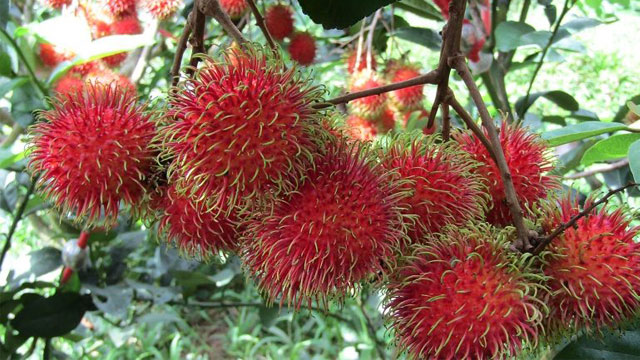Binh Hoa Phuoc has long been famous for its bright red rambutan gardens. The rambutan here is sweet, the meat is not sticky, so it is loved by many people. For that reason, rambutan in Vinh Long is said to be the best in the country.
Every July and August, when visiting Binh Hoa Phuoc, tourists are mesmerized by the eye-catching red color. There are many different types of rambutan here such as: peeled rambutan, longan rambutan, java rambutan… each type has its own charm. With alluvium accreted by the Tien River, every season it bears fruit and flowers.
The white, pearl-like fruit hidden behind the red sharp thorns is extremely sweet and pleasant. Visitors to Vinh Long are therefore cooler after a long trip. And the journey seems to be connected much closer.
Source: Collected internet.
The streets paint the lives of Vietnamese people. The streets here are not just for traveling. Streets and sidewalks are also places to shop, eat, meet for a cup of coffee, get a haircut or rest. Big cities are always full of life with the roar of millions of motorbikes, where you can feel a constant source of energy bubbling on every street.
Vietnam, whose national name is the Socialist Republic of Vietnam, is a socialist country located at the eastern tip of the Indochina peninsula in Southeast Asia, bordering Laos, Cambodia, China, and the sea. East and Gulf of Thailand. The territory of Vietnam has been inhabited since the Paleolithic era, starting with the states of Van Lang and Au Lac. Au Lac was annexed by the Trieu Dynasty in the North in the early 2nd century BC, followed by a period of Northern domination lasting more than a millennium. The independent monarchy was re-established after Ngo Quyen's victory over the Southern Han dynasty. This event paved the way for independent dynasties to succeed and then repeatedly win against wars of invasion from the North as well as gradually expanding to the south. The final period of Northern domination ended after the Lam Son insurgent army's victory over the Ming Dynasty.
The cultural identity of ethnic groups is clearly expressed in community life and in economic activities from customs, costumes to culinary styles. Below are the unique features of Vietnamese culture that you can learn about.
Religion in Vietnam is quite diverse, including Buddhism (both Mahayana, Theravada and some modified groups such as Hoa Hao, Tu An Hieu Nghia); Christianity (including Catholicism and Protestantism); endogenous religions such as Cao Dai; and some other religions (Hinduism and Islam). Different types of folk beliefs also have a lot of influence. The majority of Vietnamese people consider themselves non-religious, even though they still go to religious sites several times a year...
